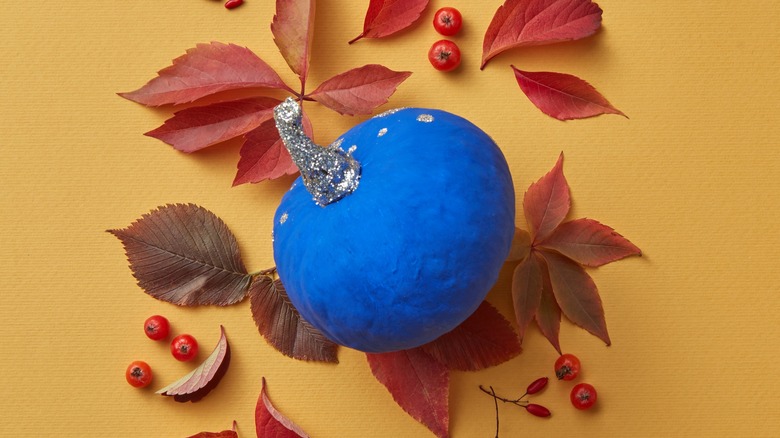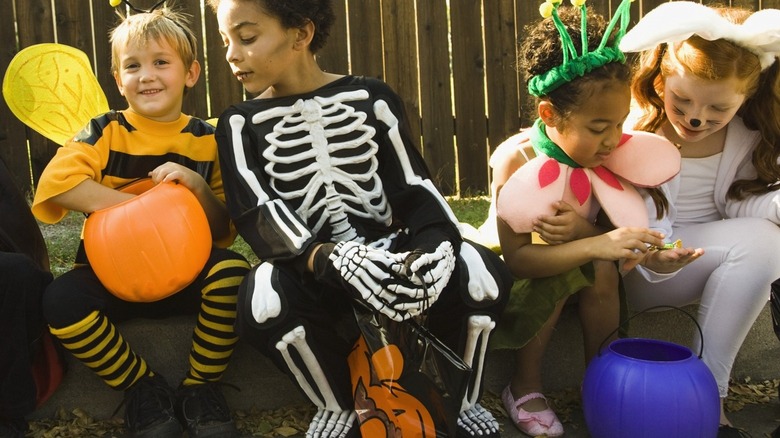What A Blue Pumpkin On Your Doorstep Means On Halloween
Halloween is quickly approaching, and with it comes spooky decorations, haunted houses, and trick-or-treating. In recent years, however, some things have changed, including the colors of pumpkins adorning homes. While you may be familiar with the teal pumpkins on front porches come Halloween, other blue-painted pumpkins deserve our attention. Pumpkins painted with a more traditional blue hue signify support for people with autism spectrum disorders (ASDs) and that your house is a friendly space for spooky season revelers with ASD. Additionally, if you see a trick-or-treater carrying a blue plastic pumpkin bucket on Halloween, this is often (but not always) a signal that they are on the autism spectrum.
The original idea for blue pumpkins started on social media, with viral posts beginning to circulate around 2018 (via Good Housekeeping). Halloween can present challenges for those with an autism spectrum disorder and their families. A good example is that a child with ASD may not be able to say "trick-or-treat" or "thank you" like other kids do. Therefore, the blue pumpkin they carry can serve as a timely reminder that a little extra understanding and patience can go a long way in helping all trick-or-treaters and their families get the most out of the holiday season.
What to do to participate and show your support
If you'd like to participate in supporting people with ASD or sensory sensitivities this Halloween, start by painting a few pumpkins blue and setting them on your porch or in your windows. There are even some cool-hued natural pumpkins to start with, but try painting them a bright shade of blue to stand out from the rest. However, since people with ASD face additional challenges during Halloween, taking a different approach to your trick-or-treating environment is important.
For example, some people with ASD may be overwhelmed by crowds. For this reason, consider having an alternative area for handing out treats to these families. Also, understand that some trick-or-treaters with ASD may be older than others and may not be wearing an obvious costume. Sometimes, the person might have a card that says the expected words or may have a caretaker to help them. Further, they may appear agitated and avoid eye contact. Always follow the lead of their guardian and speak in a calm, clear manner. Again, a little understanding goes a long way.
Avoid flashing lights, loud music or sound effects, and jump-scares when crafting an ASD-friendly Halloween space. Instead, provide a well-lit path and calm environment. Our differences make us stronger as a whole, so remember that Halloween should be safe, fun, and enjoyable for everyone.

